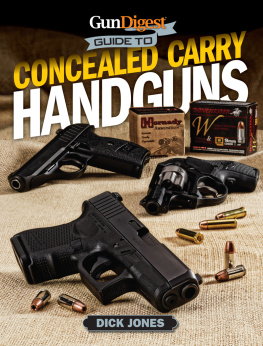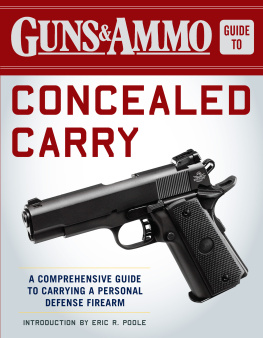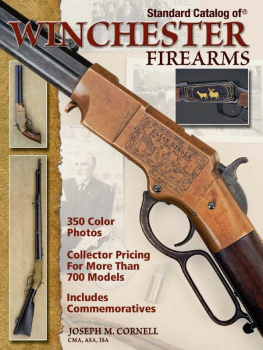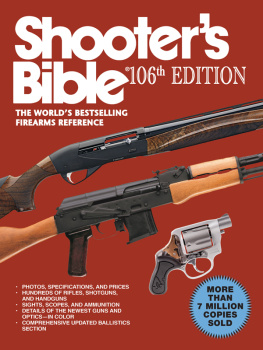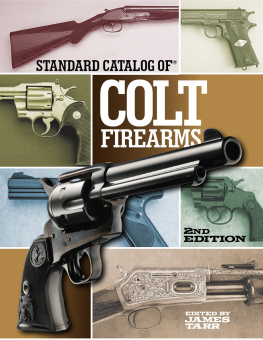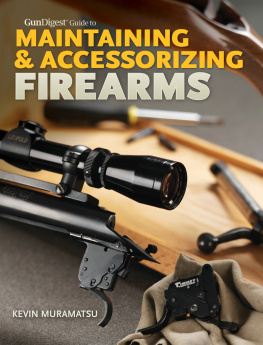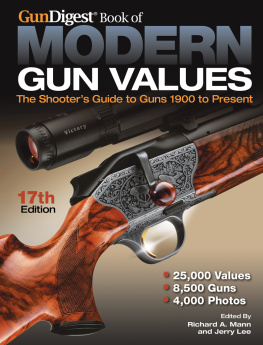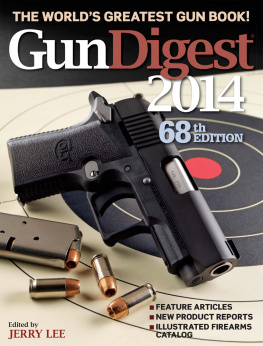Thank you for purchasing this Gun Digest eBook.
Sign up for our newsletter and receive special offers, access to free content, and information on the latest new releases and must-have firearms resources! Plus, receive a coupon code to use on your first purchase from GunDigestStore.com for signing up.
or visit us online to sign up at
http://gundigest.com/ebook-promo
DEDICATION
I first one to thank my Lord and Savior, Jesus Christ. Through You, all things are possible. Second, I want to thank my wife for her patience and support throughout my time writing this book, and for your understandingof my gun addiction. You are the light of my life. Thank you also to friends and family for your patience and understanding as you had to deal with me dealing with deadlines.
This book is dedicated to my three boys: R. Justin, Tyson, and Brandon. You are the three best things that I have ever done in my life. You make me strive to be the best man that I can be, so that I may do my best to show you how to be the best men that you can be.
CONTENTS
INTRODUCTION
TO UNDERSTAND CZECH FIREARMS manufacturing, Im going to delve a bit into Czech and European history in this book. Though this book is about guns, not about history, to me one of the most interesting things about firearms is the historical aspect. Ive found that, generally speaking, the vast majority of firearms enthusiasts that Ive come across are also history buffs. Even so, I understand that not everyone including gun enthusiast-history buff-types is as nerdy as I when it comes to history. So I will try to limit my geeked-ness when I discuss historical aspects, with the exception of chapters that are specifically about the history of particular subjects. This means that in some instances I might try to put events into a nutshell so-to-speak, encompassing large topics into a brief sentence or two. My intent is not to gloss over important events, but to try to limit my enthusiasm for history so as not to bore the reader who is not as much of a history buff, but is here to read a book about firearms.
Another thing to keep in mind, this book is not an all-inclusive list of every firearm that CZ has made. I tried to include as many as I could, but frankly they just make too many. There are some firearms that are very obscure, some that were never imported into the U.S., and for someI just ran out of space. CZ represents a unique challenge in trying to track down information from the past, mostly due to the secretive nature of the Iron Curtain, behind which it once sat. Some of that information will probably never be found. Plus, as I mention elsewhere in the book, the history of CZ and Czech gun factories is very convoluted. Some factories simply change names. There are separate factories that merged under communism and later separated, only to merge once again under the CZ banner. Some historical weapons are marked CZ but only as a generic marking for Czech Arms Factory, not as the actual company CZ.
Additionally, if youre here to read about the wonderful line of CZ shotguns or Dan Wesson firearms, you are unfortunately out of luck, those are outside the scope of this book.
Just a note to the reader: CZ doesnt pay me, this book has no obligation to CZ, and in fact I could have written this entire book as a critique of CZ. But I dont feel that way. I do my best to look at things objectively. I am a fan of CZ, always have been since the first time I picked one up and fired it, but there are things that I feel CZ doesnt get quite right, and those things will be included in this book.
PART 01
HISTORY OF CZECH GUNMAKING, PRE-WWII
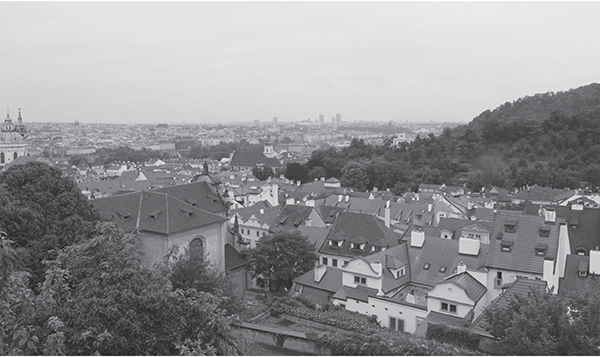
The view of Prague from Prague Castle. Few places are more beautiful than the Czech Republic. The Czech people have been through a lot of bad times and oppression, most recently from Nazi Germany, then from the communist Soviet Union.
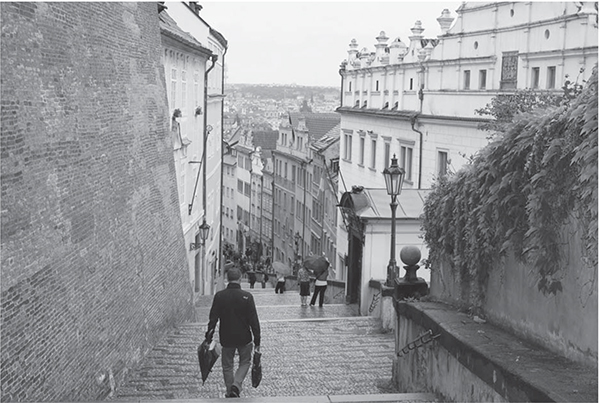
A medieval-era street (typical in most cities in Czechia) coming down from Prague Castle.
THE FIRST FIREARMS in Czech lands can be traced back to the 1370s, in Old Town Prague, and by 1400 there are records of several gunmakers. The biggest customers were the nobility, which were centered around Prague, so thats where most of the gunmakers were located. The Hussite Wars of 1419 to 1434 were a boon for Czech arms makers, and in fact some of the gun language we use today can be traced to that era, like pistol (ptala, means a pipe), and howitzer (hkovnice, evolved from houfnice). (Note: There is much dispute where the word pistol comes from; some believe it comes from middle French pistolet, some say middle French pistole, some say German Pistole, some say Russian pischal, or Italian pistolese.)
Many of the firearm innovations of the 15th and 16th centuries came from southern German lands, and a lot of this spilled over to the nearby Czech gunmakers. It became very competitive, with the wares becoming more in demand with every conflict in Europe. Many of the oldest examples of firearms found in museums around the world many of which were innovations never seen before bear the names and markings of Czech makers.
Czech gunmaking continued to thrive through the Napoleonic wars. Im not an expert in this history, but it seems that while other gunmakers were forming into companies like the Austrian Steyr Czech gunmakers didnt do this.
Prior to 1918 and WWI, Czech lands were part of Austria-Hungary. Weapon manufacturing was dominated by the Austro-Hungarian empire, and most individual Czech gun makers worked for these companies.
In 1918, Czechoslovakia became an independent country, and from the Hapsburgs they inherited a large but aging weapon manufacturing infrastructure.
After World War I, the Czech arms industry was the first industry to see upgrading of its factories. New methods lead to large scale mass production and, nearly as important, the ability to produce standardized parts with compatibility within a firearm model. When a rifle was produced, any of the individual parts could be put in any of the individual weapons, and it would fit with no manual fitting or modifications required. Even the Austrians and Germans werent doing this at the time. It contributed greatly to the production effectiveness of the Czech arms industry, and at the time they were very competitive with their European peers on the international market.
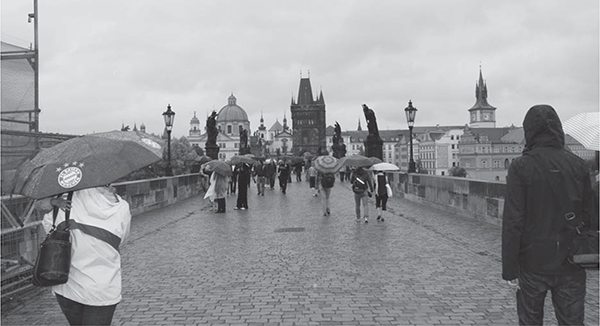
The view down Charles Bridge in Prague. Built starting in 1357, it was the only way across the Vitava river in Prague until 1841.
During this interwar period many new arms factories were started, all for production of military small arms. The Czech arms industry had not seen anything of this scale before, but got the industry going in a relatively short timeframe. Some of this was due to the fact that Czech gunmaking goes back a long time, so they were steeped in the gunmaking tradition. In addition, up until World War I, a good portion of Czech lands fell under the Austro-Hungarian Empire. The Austro-Hungarians had massive production capabilities, with a machine building industry that rivaled the U.S., Germany, and Great Britain at the time. After the war, these skilled workers and weapon designers returned home and filled the weapons factories with a lot of experience and gun making know-how.


